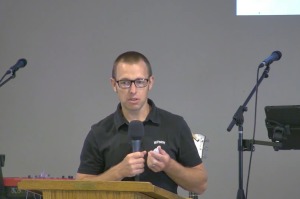Study: Over 40 Percent of High School Graduates Unprepared for College, Workforce
A new study demonstrates that over 40 percent of high school graduates are neither prepared for college nor prepared to enter the workforce. The researchers suggest that schools simultaneously prepare all students for both college and work.
High school students can be thought of in three separate categories: those who are taking classes to prepare for college, those who are taking vocational education courses to prepare to enter the workforce directly after graduation, and those who fit into neither of the first two categories.
Regina Deil-Amen and Stefanie DeLuca found, in the report titled “The Underserved Third: How Our Educational Structures Populate an Educational Underclass” – published in the Journal of Education for Students Placed at Risk – that about one-third of high school students are in the first group, taking college preparation courses, and about one-fourth are in the second group, taking courses to prepare them to enter the workforce.
The rest of the students, over 40 percent, are left in a muddy middle. These “underserved” students do not take courses that would prepare them for college and they do not take courses that would prepare them to enter the workforce.
The article was published last year but just released to the general public on Monday.
“These [underserved] students are structurally positioned to transition out of school destined to fail to access labor market rewards,” Deil-Amen and DeLuca write.
They also find that high school preparations do not align well with the needs of the job market. The “underserved” tend to populate remedial classes at colleges and community colleges. But only a quarter of those who attend any type of college will end up with a bachelor's degree.
High school graduates in the “underserved” category are expected to go to college, though they have not been prepared for college-level work.
Meanwhile, Deil-Amen and DeLuca report, only 30 percent of the workforce requires postsecondary education of some sort. Plus, the number of jobs requiring only a high school diploma are expected to increase. One-fourth of the top 30 jobs that are expected to see the largest growth will not require college.
This means that a large number of students are going to college and failing when, instead, they could have directly entered the labor market after graduating high school.
“Rather than blindly advocating bachelor's degrees as the only valuable option and the cure for all social ills, it might be wise to seek broader societal solutions that extend beyond more of the same push for higher education as a route to individual mobility,” Deil-Amen and DeLuca write.
The report suggests a tighter integration of vocational training and college preparation. High school students should be given the rigor of college preparatory classes along with the skills needed to enter the workforce with only a high school diploma. This way, students who do not wish to enter college will be aware of, and prepared to, access careers that do not require post-secondary education.
Deil-Amen and DeLuca conclude, “It is important for high school students to plan for both college success and the possibility of entering the labor market without a four-year degree. ... Postsecondary access has grown dramatically, and it is time to revisit the idea of structural alternatives that have meaningful connections to the labor market.”




























